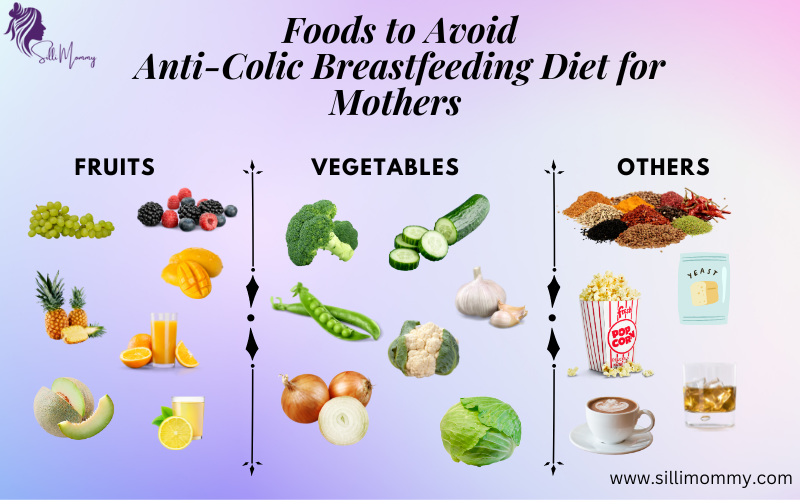As a new mom, you may have heard the term colic thrown around in parenting circles. But what exactly is colic? And how can you tell if your breastfed baby has it? Colic symptoms in breastfed babies can be distressing for both baby and parent alike, but understanding its causes and treatments can make all the difference. This guide looks closer at colic symptoms in breastfed babies and explores ways to manage this common condition. So sit back, relax (if possible!) and let’s dive into the world of colicky babies.
Table of Contents
What is colic?
Colic can be defined as excessive crying in an otherwise healthy and well-fed baby. It’s a common condition affecting 10-40% of infants, often occurring in the first few months of life. While it’s unclear what causes colic, some experts speculate it could be related to digestive issues or overstimulation.
The hallmark sign of colic is crying three or more hours daily, at least three days a week or for several weeks. This type of crying is often intense and inconsolable, making it difficult for parents to soothe their babies.
Although colic symptoms in breastfed babies can be challenging for new parents to deal with, the good news is that most cases improve on their own within six months. However, if you’re concerned about your baby’s health or well-being during this period, don’t hesitate to seek advice from your paediatrician.
It’s important to remember that every baby is unique and may have different needs regarding soothing techniques and feeding schedules. So, if one approach doesn’t work for your little one, don’t get discouraged–keep trying until you find something that works!
Colic Symptoms in Breastfed Babies
Breastfeeding is a natural process that provides numerous benefits for both the mother and baby. However, some breastfed babies may experience colic, which can be distressing for both the infant and the parents. Colic symptoms in breastfed babies typically start between two to four weeks of age and can last up to three months.
The most common colic symptom in a baby is excessive crying that occurs around the same time every day, usually in the late afternoon or evening. The crying episodes can last anywhere from a few minutes to several hours, and it’s not uncommon for an affected baby to cry inconsolably despite attempts at soothing.
Other signs of colic include pulling their legs towards their chest as if experiencing abdominal pain, clenching fists or arching back while crying. A gassy abdomen with rumbling sounds may also accompany these symptoms. In severe cases, this condition can cause sleep deprivation leading to fatigue in new parents.
It’s essential for parents who suspect their child shows colic baby symptoms to seek medical advice from a paediatrician before trying any home remedies or alternative colic treatment for baby available on the internet.
Causes of Colic in Breastfed Babies
The causes of colic in breastfed babies are still unclear, but several theories could explain why. One theory is that an immature digestive system may cause colic. Babies who suffer from colic may have sensitive stomachs or intestines, causing them to react more strongly to certain foods or types of milk.
Another theory suggests that the baby’s feeding habits and environment can contribute to colic symptoms. For instance, a baby who eats too quickly or gulps down air while nursing may develop excess gas, leading to discomfort and crying.
Some experts believe breastfeeding mothers’ diets can also play a role in developing colic symptoms in breastfed babies. Certain foods such as caffeine, dairy products, spicy foods and gassy vegetables like broccoli and cauliflower might trigger gastrointestinal problems for babies with sensitive digestive systems.
Other possible causes include allergies or intolerances to specific ingredients in formula supplements used during breastfeeding sessions; infections due to lack of hygiene while preparing bottles; stressors like loud noises, which lead to over-stimulation among newborns causing tummy distress; underlying medical conditions such as reflux disease – often seen after 2-3 weeks post birth period – which triggers regurgitation episodes accompanied by excessive crying spells.
While these theories offer insights into potential causes of colic symptoms in breastfed babies, no single explanation has been proven yet. New mothers need to work closely with paediatricians and lactation consultants when dealing with a fussy baby so they can help identify possible culprits behind their little one’s discomfort!
How to Help a Baby with Colic
Colic can be a distressing experience for both baby and parents. While there is no known cure for colic, there are several things you can try to help soothe your baby’s discomfort.
Firstly, try holding your baby in different positions. Sometimes changing positions or movements like gentle rocking or swaying can help ease colic symptoms. You may also want to consider using a sling or carrier, which allows you to keep your hands free while comforting your baby.
Another helpful tip is to use white noise, such as shushing sounds, soft music, or even a fan running in the background. This mimics babies’ familiar sounds in the womb and can create a soothing environment.
You could also try giving your baby a warm bath before feeding time, which may help relax their muscles and reduce discomfort during feeding. Additionally, massaging their tummy gently with clockwise circular motions may provide relief from gas buildup.
Sometimes simply taking some time away from the stressful situation by handing off caregiving duties to someone else temporarily can give you much-needed rest so that you are better equipped mentally and emotionally when returning to care for your child suffering from colic.
Diet Changes for Breastfeeding Mothers to Reduce Colic Symptoms
Breastfeeding mothers are often advised to make dietary changes if there is colic symptoms in a baby. Certain foods a breastfeeding mother consumes can cause discomfort or gas in the baby’s digestive system, leading to colic.
Dairy products are among the most common culprits for causing colic in breastfed babies. Mothers may need to eliminate milk, cheese, and other dairy products from their diet for a few weeks until they notice an improvement in their baby’s symptoms.

Other foods that can trigger colic include spicy food, caffeine, chocolate, onions, garlic and cruciferous vegetables like broccoli and cauliflower. These foods contain compounds that could irritate the baby’s digestive system, so avoiding them during breastfeeding helps reduce the chances of colicky episodes.
It is important for mothers not to drastically change their diets without consulting a healthcare provider first, as this could affect both mother and child’s health. They may also want to try eliminating one food group at a time before making major adjustments.
In addition to dietary changes, some mothers find probiotics supplements helpful – these supplements help balance gut flora, reducing gas formation, thus reducing the incidence of colicky pains in babies.
Breastfeeding moms must maintain good eating habits while slightly adjusting until they find the best suited colic treatment for baby.
How to Manage Feeding Schedules When Baby Has Colic
Managing feeding schedules can be a challenge for new moms with colic symptoms in a baby. Here are some tips to help you navigate this difficult time.
Firstly, it’s important to remember that every baby is different, and there is no one-size-fits-all solution. Some babies may benefit from frequent feedings in smaller amounts, while others may prefer longer stretches between feedings.
Secondly, establish a routine so your baby knows when to expect their next meal. This can help reduce stress and anxiety for you and your little one.
Thirdly, consider using a breastfeeding pillow or other support to make feedings more comfortable. This can help prevent discomfort for you and your baby during long nursing sessions.
Last but not the least, don’t be afraid to ask for help from family members or friends if you need extra support. Having someone else take over a feeding session can give you a much-needed break.
Remember that it’s okay if things don’t go perfectly according to plan. Colic is temporary and eventually fades away as your baby grows older. Keep up the good work, Mom!
Tips for Reducing Stress During Feedings
As a new mom, feeding your baby can be one of the most stressful times of the day, especially if your little one has colic baby symptoms. Here are some tips to help you reduce stress during feedings:
Ensure you’re comfortable and relaxed before starting a feeding session. Sit or recline in a comfortable chair with good back support and use pillows to prop up your arms if needed.
It’s also important to minimize distractions during feedings. Turn off the TV, put away your phone, and focus solely on bonding with your baby.
Another helpful tip is to have everything you need within reach before starting the feeding session. This includes burp cloths, diapers, wipes, and anything else you need.
If you feel overwhelmed or frustrated during a feeding session due to colic symptoms in a baby or difficulty latching on properly by your baby, try taking deep breaths or practicing meditation techniques like mindfulness while breastfeeding.
Don’t be afraid to ask for help! Reach out to family members or friends who can provide extra support during this time. Remember that caring for yourself emotionally and physically is just as important as caring for your newborn baby’s needs too!
Self-Care for New Moms Dealing with Colic Baby Symptoms
New moms often put their needs on the back burner while caring for their colicky babies. However, prioritizing self-care is important to maintain physical and emotional health during this challenging time.
One way to practice self-care is by carving out moments of relaxation throughout the day. This can be as simple as taking deep breaths or enjoying tea during naptime.
It’s also important for new moms to reach out for support from family and friends. Whether it’s someone who can lend an ear or offer practical help with household tasks, having a strong support system can make all the difference.
In addition, practising healthy habits such as eating well-balanced meals and getting regular exercise can go a long way in promoting overall wellness.
Do not hesitate to ask for any professional help. Talking with a therapist or joining a support group geared towards parents dealing with colic can provide valuable resources and emotional support during this difficult time.
Home Remedies for Colic in Breastfed Babies
New moms may get exhausted when dealing with a colic symptoms in a baby and it can be incredibly stressful. Fortunately, some home remedies work as colic treatment for baby and may help soothe your little one’s discomfort.

One popular remedy is the use of herbal teas. Chamomile tea has natural calming properties and can be given to infants in small amounts. Fennel tea is another option that may help ease digestion and reduce gas.
Swaddling your baby tightly in a warm blanket can also provide comfort and security, helping them feel more relaxed during feedings or bedtime.
Massaging your baby’s tummy in circular motions can aid digestion and relieve discomfort from gas buildup. You can also try bicycle leg exercises by repeatedly bending your knees towards the chest.
White noise machines or apps playing nature sounds like rainfall or ocean waves at low volumes have also proven effective for soothing babies.
Burping your baby after every feed helps releasing gas that goes in while feeding. It is necessary to burp a baby to avoid colic issued in babies.
It’s essential to note that while these home remedies are generally safe, it’s always best to consult with your paediatrician before trying any new methods on your little one.
Alternative Treatments for Colic in Breastfed Babies
While traditional colic treatment in breastfed babies can be effective, some parents prefer to explore alternative options. Here are a few alternatives that may help soothe and calm colic symptoms in a baby.
Chiropractic Care
Some parents have succeeded with chiropractic adjustments for their colicky babies. This treatment involves gentle spine manipulations to improve nerve function and reduce discomfort.
Infant Massage
Massaging your baby’s belly in circular motions can relieve the gas and digestive discomfort caused by colic.
Herbal Remedies
Several herbs are believed to aid digestion and relieve colic symptoms, including chamomile, fennel, and ginger.
Probiotics
Adding probiotics to your baby’s diet may help balance the bacteria in their gut and ease digestive issues associated with colic.
It is important to note that before trying any alternative treatment, it is crucial to discuss it with your paediatrician first, as they can advise you on what would work best for your little one’s unique needs.
Conclusion
Colic is a common condition that can cause distress for both babies and their parents. While it can be challenging, there are many ways to manage colic symptoms in breastfed babies.
By understanding the signs of colic and making diet changes as needed, breastfeeding mothers can help reduce their baby’s discomfort. Also, managing feeding schedules and utilizing home remedies or alternative treatments can relieve colicky babies.
Remember to take care of yourself during this time as well. Dealing with a colic symptoms in a baby can be stressful, so prioritize self-care whenever possible.
With patience and perseverance, most cases of colic will eventually subside on their own. If you have concerns about your baby’s health or struggle to manage colic symptoms, don’t hesitate to contact your healthcare provider for guidance and support.




Nice tips 🙂 very informative article.
The author understands how moms are tensed for their babies. Keep it up 🙂